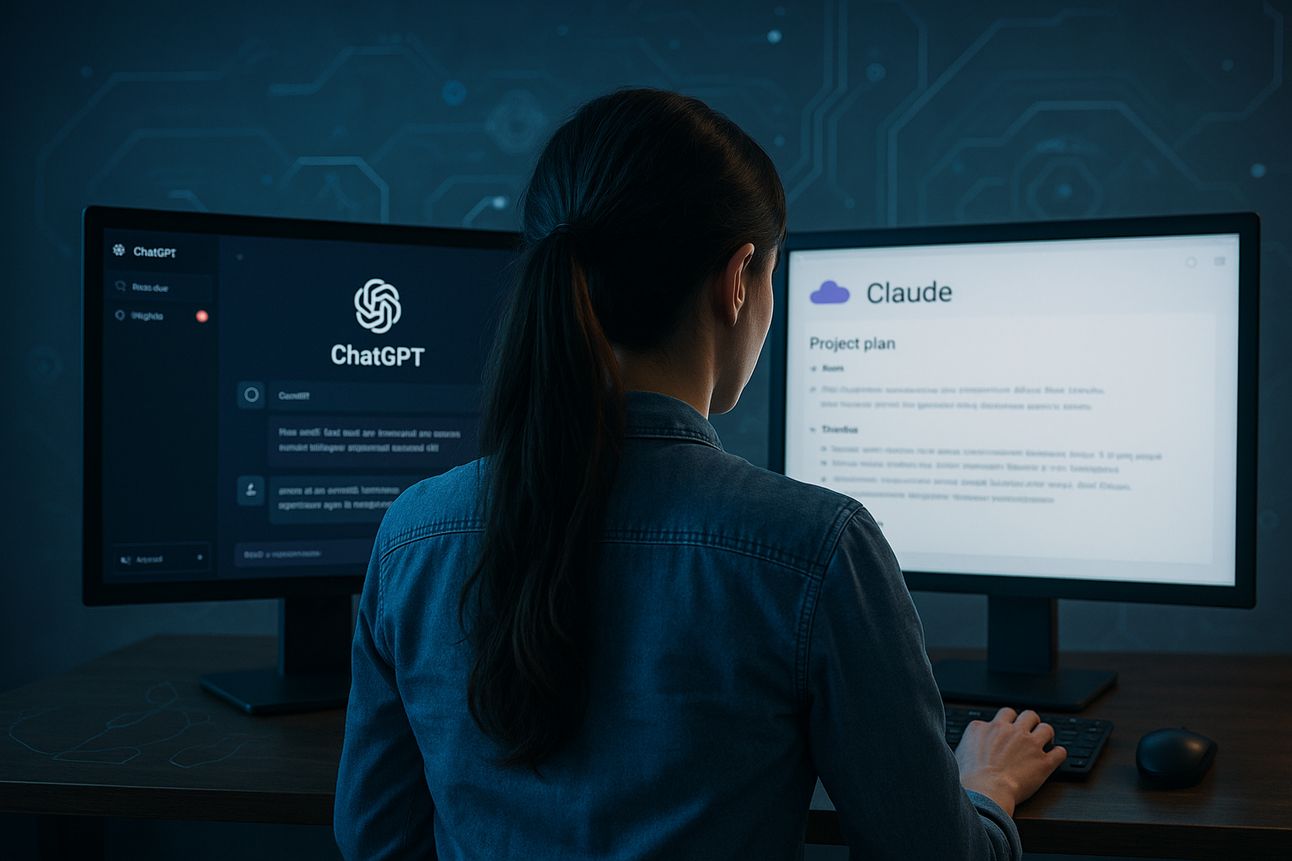Earlier this year, I started a podcast with my friend and CEO of Opaque Systems, Aaron Fulkerson, called AI Confidential.
It was an exciting new medium, but I quickly ran into an unexpected challenge: I was completely multimedia illiterate.
The producers told me I needed better lighting, a high-quality microphone, and something called a Cloudlifter (it turned out to be a powerful audio booster—it made me sound like Chef from South Park or Barry White, take your pick).
But setting it up was a different story.
So I did what any AI-savvy person would do: I created a ChatGPT Project.
I uploaded a list of all the tools and hardware I was using, asked for help on configuration, and even explored how to improve my background setup.
Now, whenever a technical issue arises, I return to the same Project—since it retains all the context. And it gets better: I added our video editor Meghan to the thread, turning it into a true collaborative workspace.
That experience revealed how powerful persistent AI collaboration tools can be. This workflow is a game-changer not just for podcasts, but for any ongoing, complex project.


AI Collaboration with ChatGPT and Claude
Simplify your projects with AI tools that keep context, support teamwork, and save time.
In business, collaboration is where momentum often breaks down. Misaligned updates, scattered communication, and repetitive back-and-forth slow down progress. AI tools like ChatGPT Projects and Claude Artifacts are specifically designed to reduce this friction.
Rather than managing an array of email threads, shared folders, and loosely connected documents,These tools help you create a centralized, AI-enhanced workspace that evolves with the project. Everyone on your team can access the same context and contribute to an ongoing thread of thought, development, and decision-making.
ChatGPT Projects: Persistent, Context-Rich Workspaces
Projects are a relatively new feature in ChatGPT that allows you to:
Upload and organize files, links, and notes
Ask complex, multi-turn questions with memory
Share the workspace with collaborators
Keep all prompts and outputs in one place
This means ChatGPT doesn’t forget what you’re working on. You can revisit discussions, iterate on responses, and solve problems across sessions with all your context intact.
How to Use ChatGPT Projects
Go to https://chat.openai.com
Click on the "Projects" tab in the left-hand menu
Create a new Project and give it a clear title
Upload any relevant documents, images, or links
Begin prompting with context-aware questions
To add a collaborator, click the share icon and enter their email
Return to the Project anytime to pick up where you left off
Ideal for:
Launch campaigns
Product documentation
Multimedia projects
Research briefs
Once you start using Projects, ChatGPT becomes less like a chatbot and more like a persistent analyst or assistant.
Sample Prompt:
"Given these three product briefs, draft a unified value proposition."
Claude’s Artifacts provide a slightly different format that feels familiar to teams used to collaborative document editors.
With Artifacts, you can:
Edit and review structured documents (memos, specs, reports)
Collaborate with team members in a shared interface
Track how the AI evolves a draft over time
Artifacts are especially useful when you need structured thinking, clean output, and real-time review. They help combine human input and AI suggestions in a fluid loop.
How to Use Claude Artifacts
Go to https://claude.ai
Start a new chat and select "Create Artifact"
Use the prompt bar to tell Claude what you want to create
The Artifact appears as a live document below the chat
You can edit, revise, and comment in real-time
Invite collaborators to view or edit via the share icon
Sample Prompt:
"Turn this meeting transcript into a 1-page internal strategy memo."
Daily Workflow Example
Let’s return to my podcast setup.
Created a ChatGPT Project and added a file with all the hardware specs
Uploaded images of my background and links to my lighting gear
Then I prompted ChatGPT: “What’s the ideal setup for this mic in this room?”
Used follow-up prompts to debug streaming settings
Shared the Project with our video editor
Any time a new issue comes up, I revisit this same space
It’s like maintaining a continuously improving knowledge base for your project—without the burden of manual documentation.
Benefits for Business Teams
Context retention: Projects and Artifacts remember what you uploaded and discussed.
Multimodal input: You can upload PDFs, photos, specs—anything.
Fewer handoffs: Everyone works in the same AI-augmented space.
Better iteration: AI improves its responses as it learns the project.
Faster onboarding: New collaborators can quickly get up to speed by reading the thread.
Cross-time zone continuity: Teams can contribute asynchronously with full context.
Institutional memory: Important decisions and context are captured, not lost to time.
For business users juggling multiple teams and tools, these platforms offer a more integrated way to manage communication, decisions, and execution without constantly restarting the AI’s memory.
How to Get Started
Try ChatGPT Projects: https://chat.openai.com → Explore the "Projects" tab
Test Claude Artifacts: https://claude.ai → Create a new Artifact and invite collaborators
For any project: Upload what you have, ask targeted questions, and share the workspace
AI Collaboration Can Give You Superpowers
Most AI tools are great for one-off questions. But real business work happens across weeks or months. ChatGPT Projects and Claude Artifacts give you continuity, shared context, and fewer tool-switches.
That means less rework, faster iteration, and smarter collaboration—even if you’re starting out as a multimedia novice.

I appreciate your support.

Your AI Sherpa,
Mark R. Hinkle
Publisher, The AIE Network
Connect with me on LinkedIn
Follow Me on Twitter


